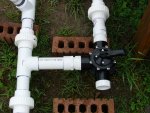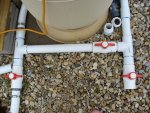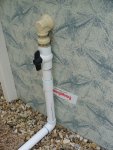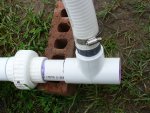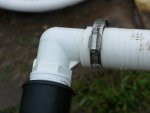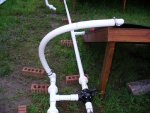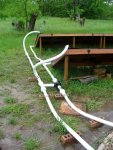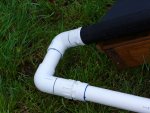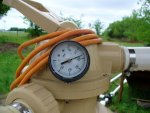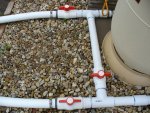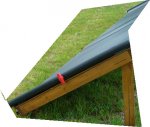Jasonlion- the three way is still in the same position that it was in the first set of pictures. It stayed in place and everything else was replumbed around it.
dman2b-the three way valve is the main thing that determines whether water is going through your solar panel before it goes back to the pool. You plumb it so that it either allows water to the panels through one outlet, or if you turn the handle, it sends the water back to the pool, bypassing the panels. This is good for weather such as we are having. Today was a solar panel ON day-sunny. Tonight, storms start and we may have torrential rains, hail, wind, and all kinds of nasty weather for the next 3 days. Those are solar panel OFF days, but you certainly don't want to turn off your pump for 3 days just because you have no way of bypassing your solar panel. If you run the panel during cool, rainy, cloudy weather, the panel will cool your pool- not the desired effect.
The next series of pictures coming up (hopefully this weekend) will be of the solar controller that will go on the system, which also involves the 3-way valve, so it is also for that purpose.
We did do something a little different, in that we have a second separate bypass that does not depend on the 3-way valve, because in the winter, the whole system (panels, 3-way valve, pipes and all) has to come off and go into storage. But, we don't close our pool in winter- we just stop using it and run the pump when the weather gets below freezing. We have to be prepared for all weather types here, sometimes all in one day.
If you are just going to do one panel and control it manually (not above water level- having to lift the water changes everything), I suppose you could use a system of a couple ball valves to plumb a bypass without a 3-way valve. I have to tell you, though, after 3 days of "Oh, the sun is out, time to run out and turn on the panels" followed by "Darn, it's cloudy, time to run out and turn off the panels"..repeat roughly every two hours...it gets mighty old. I am really looking forward to the electronic controller to take that job over for me. I have better things to do with my time.


 :sun:
:sun: 